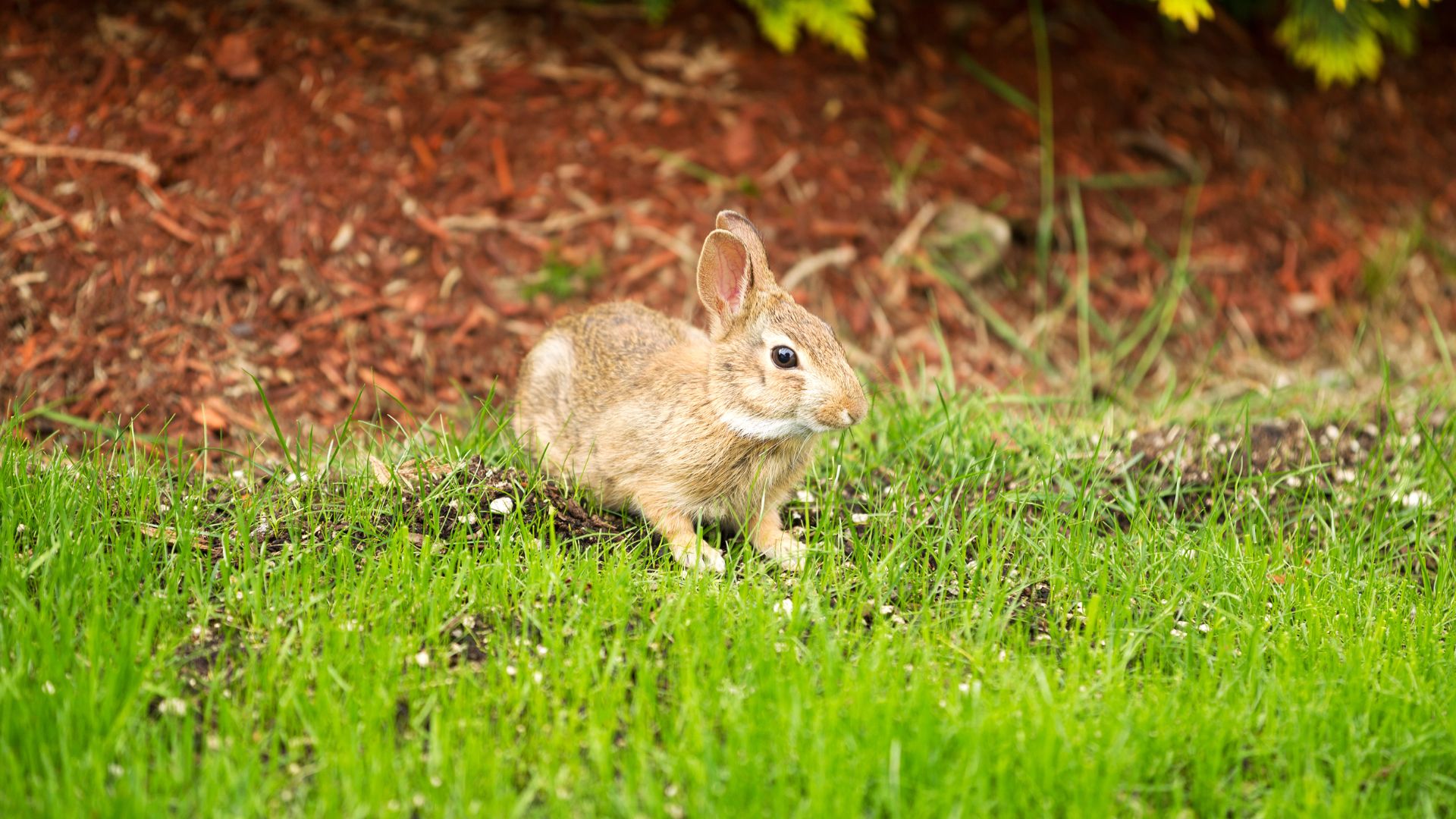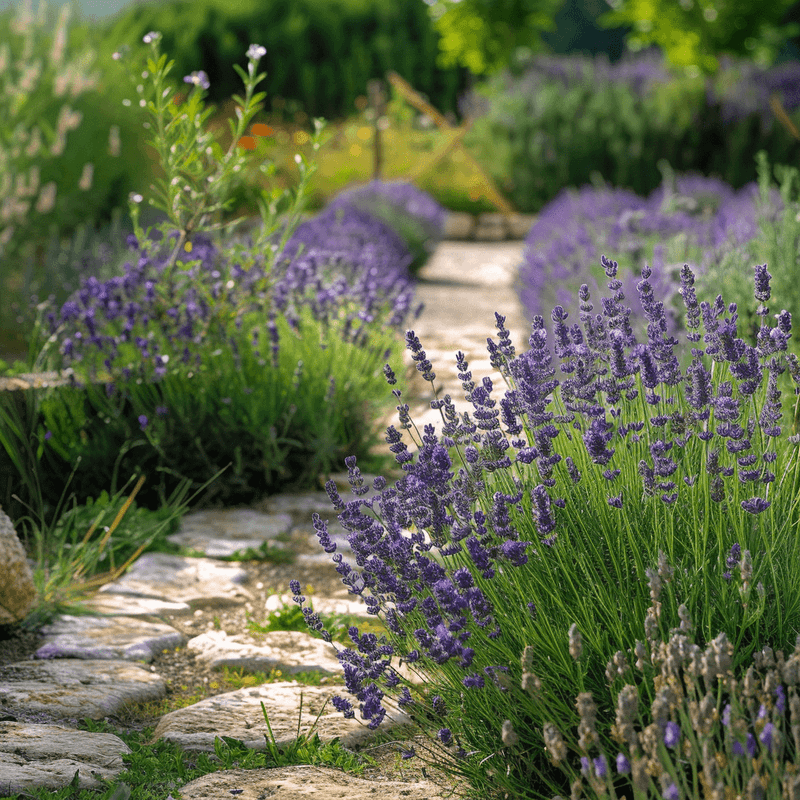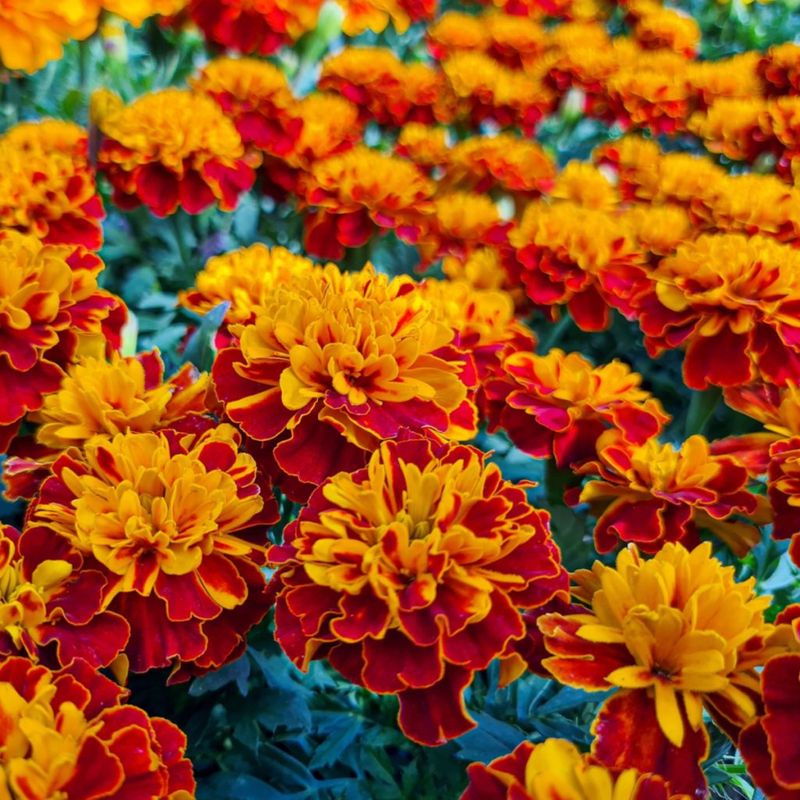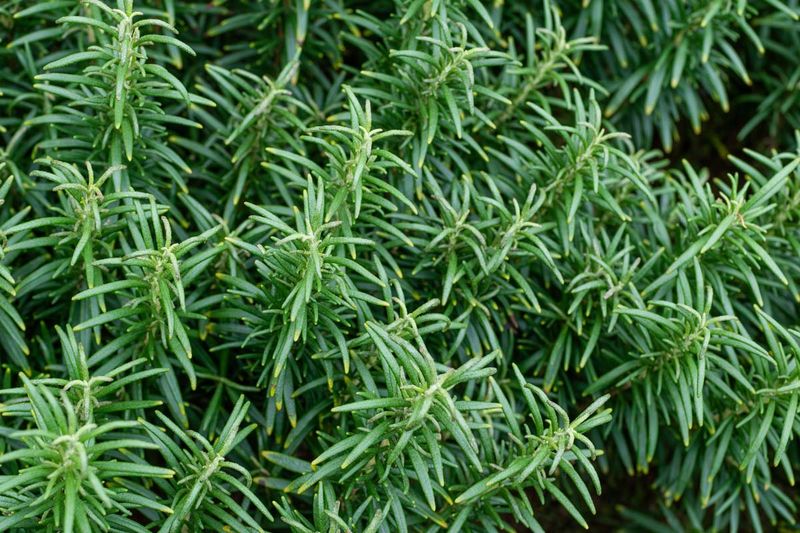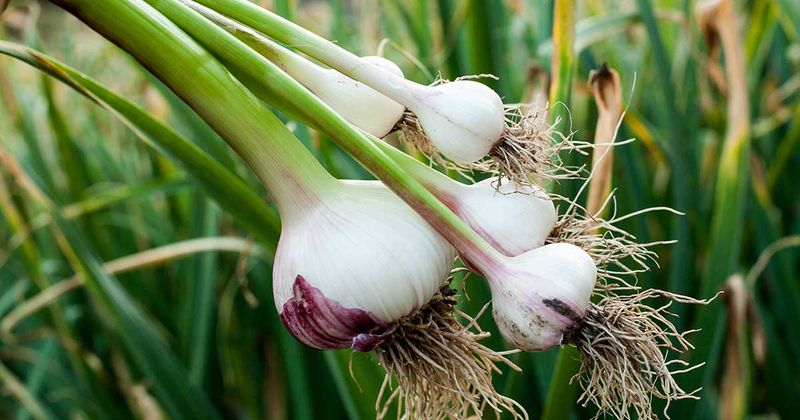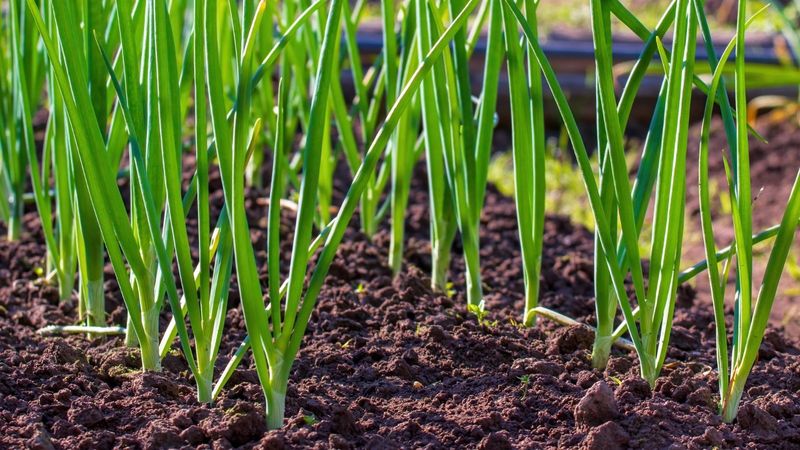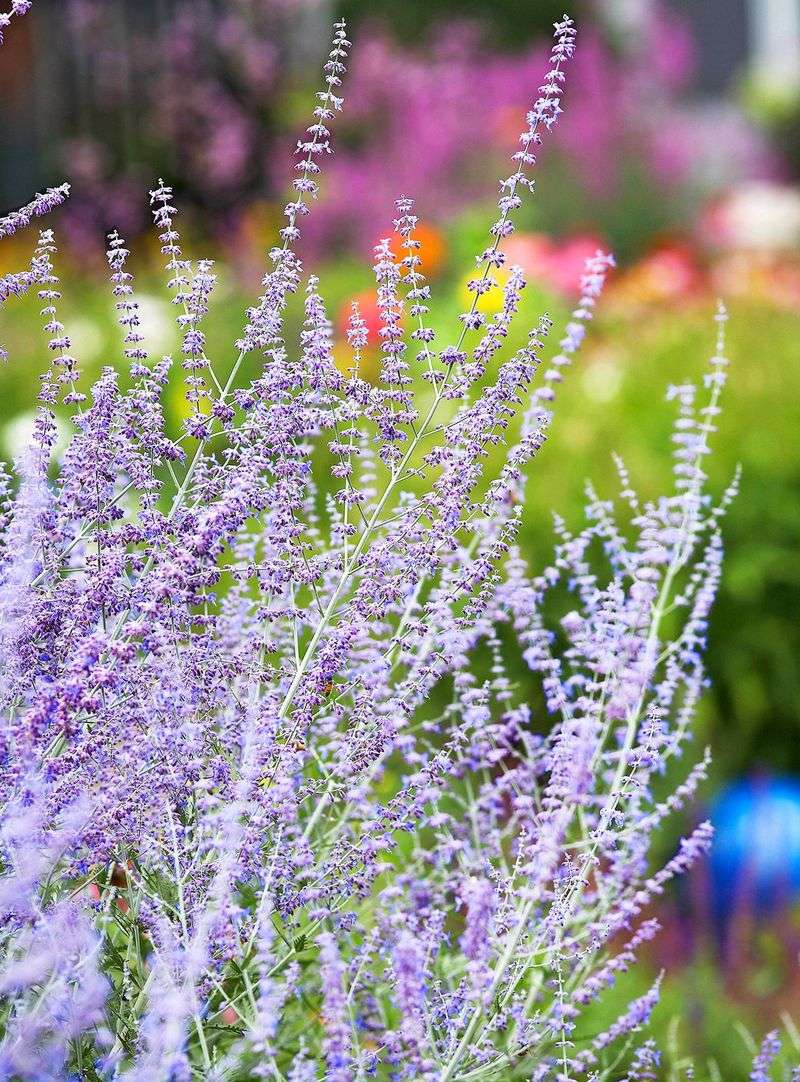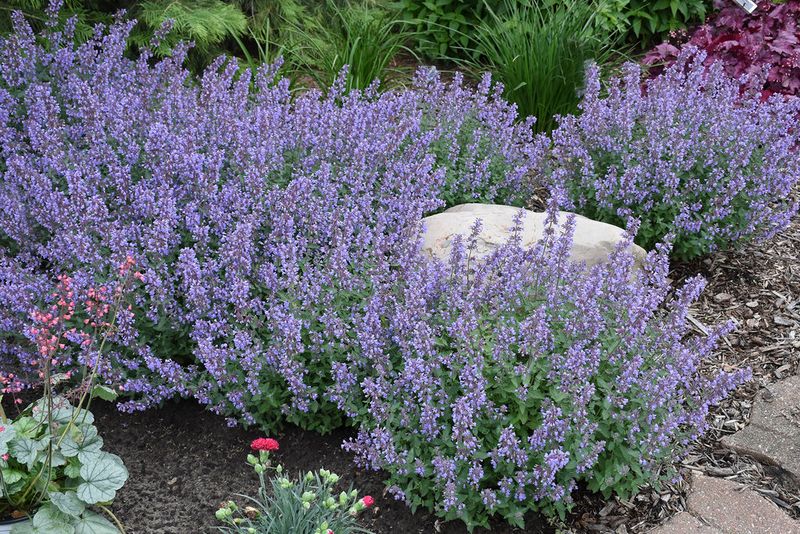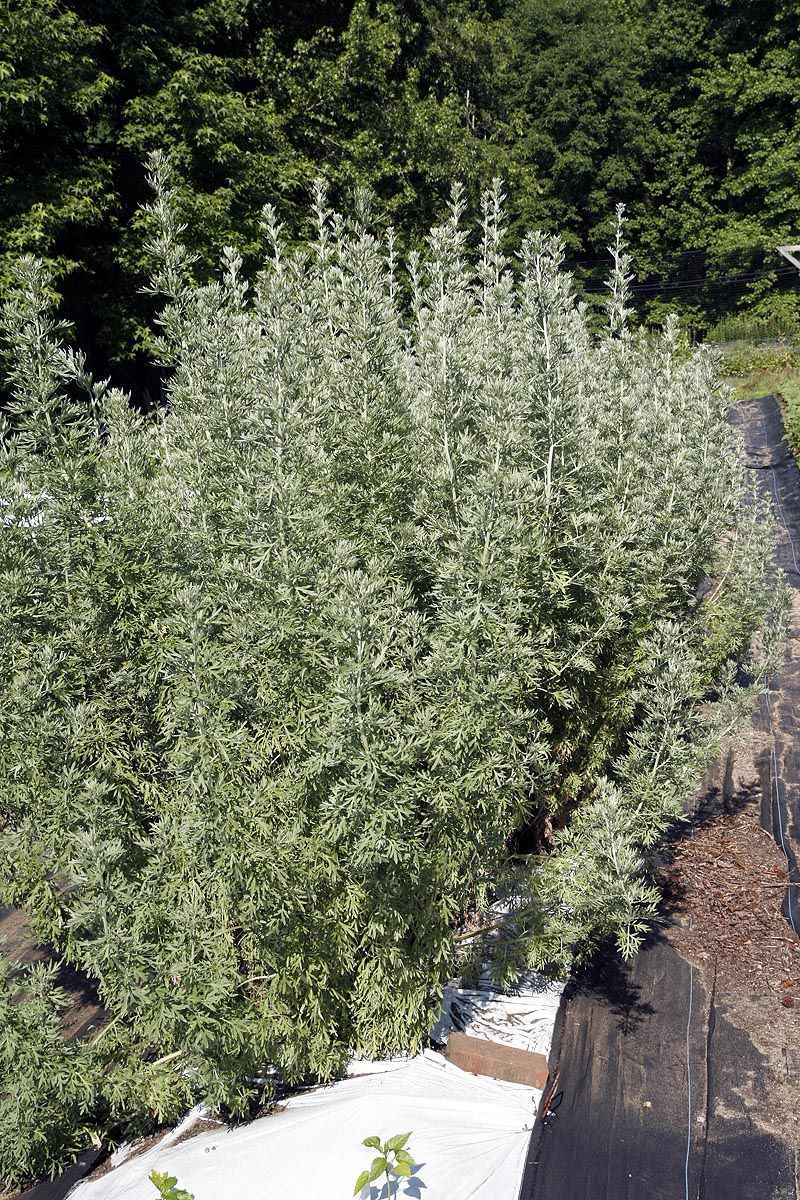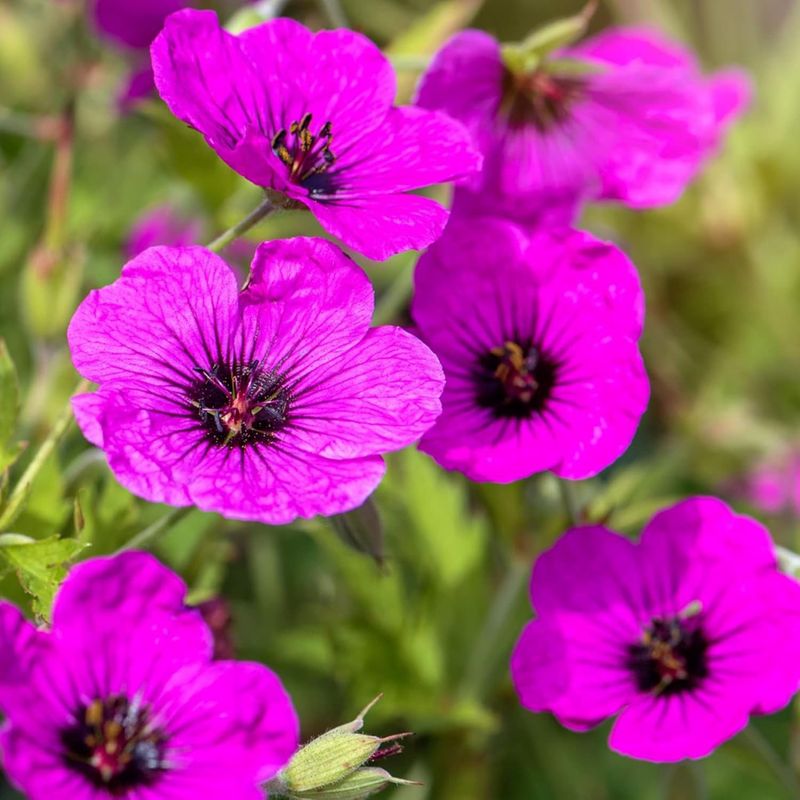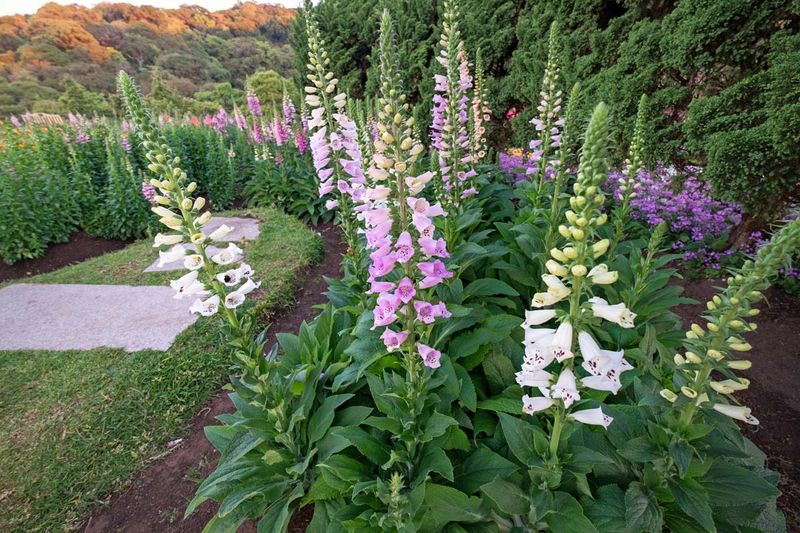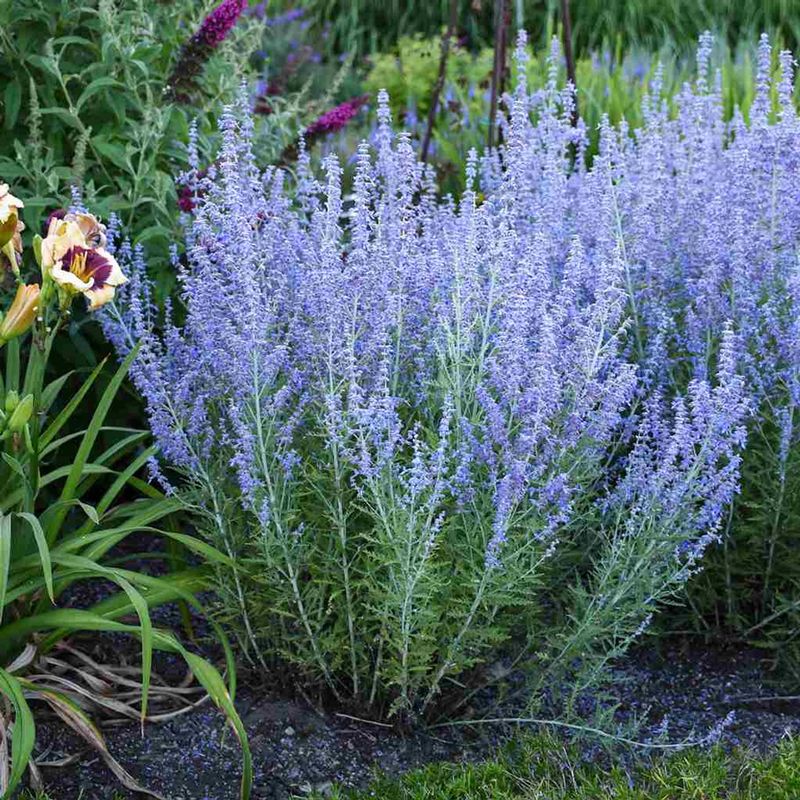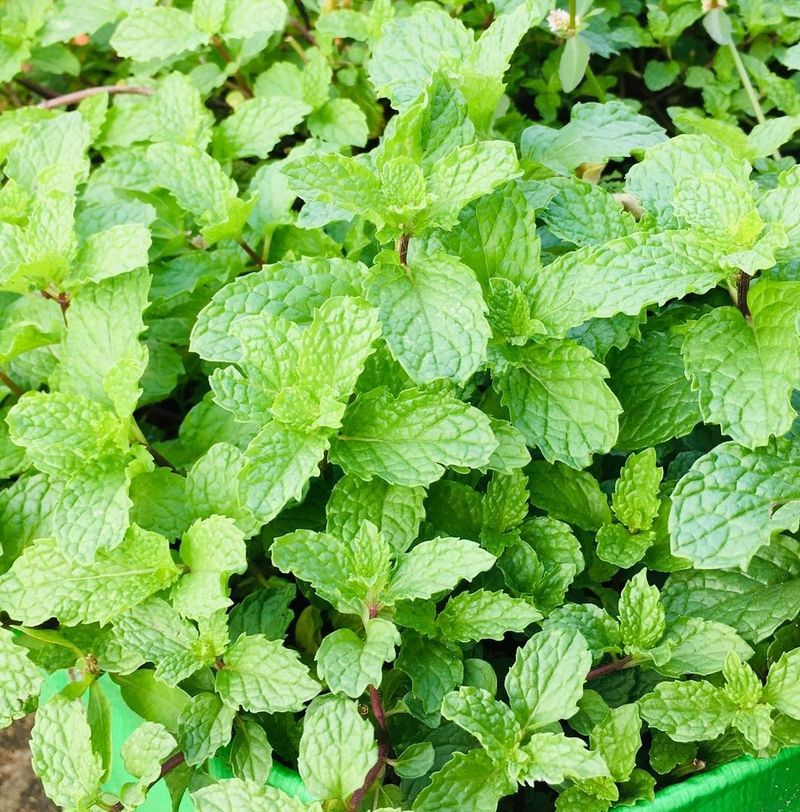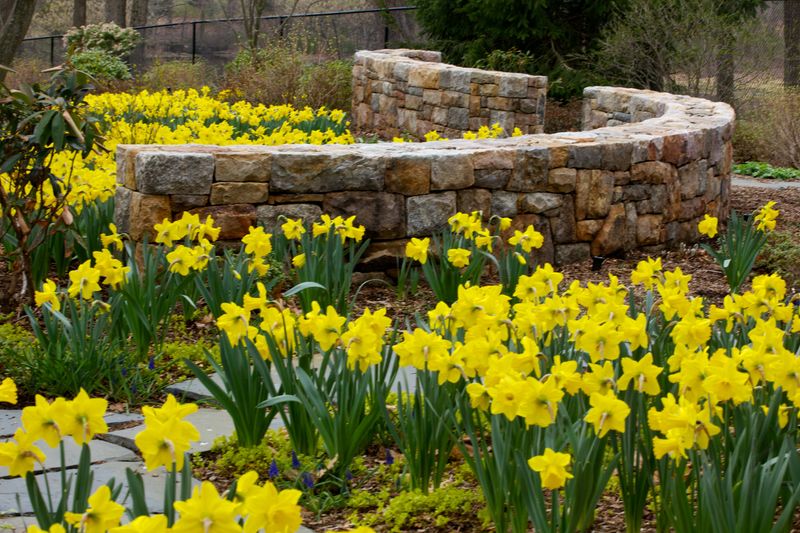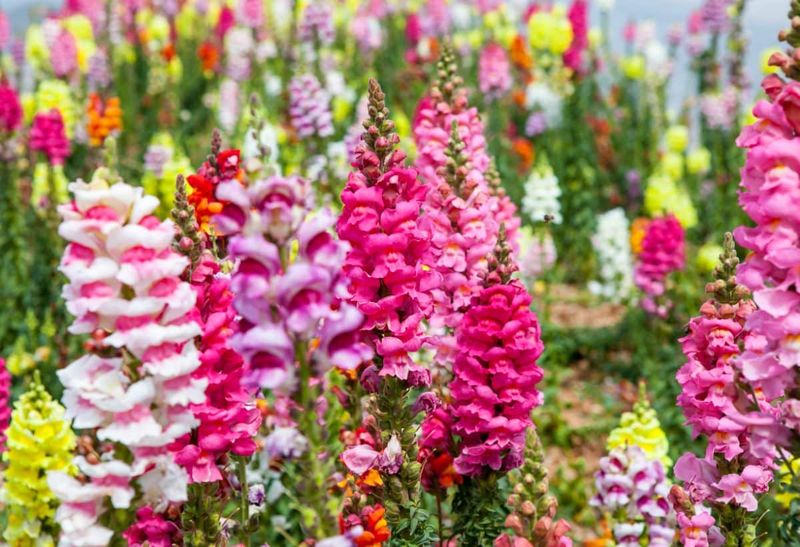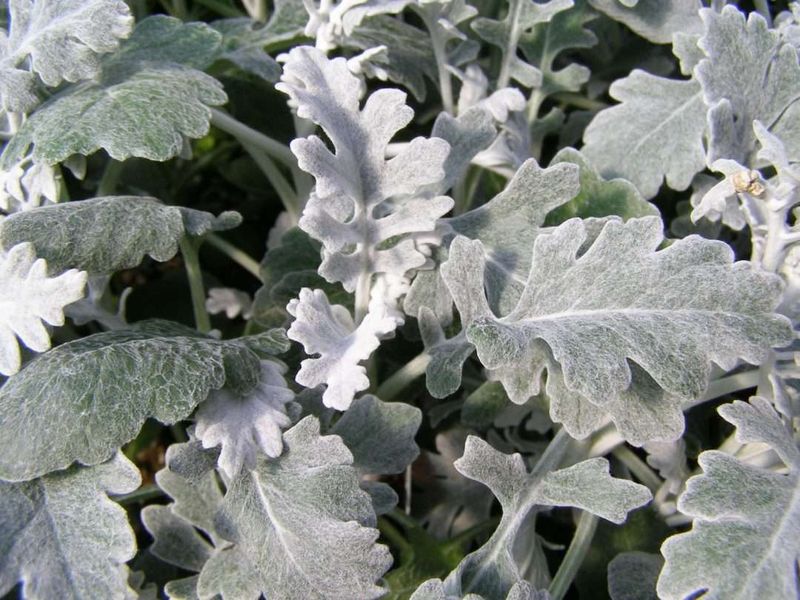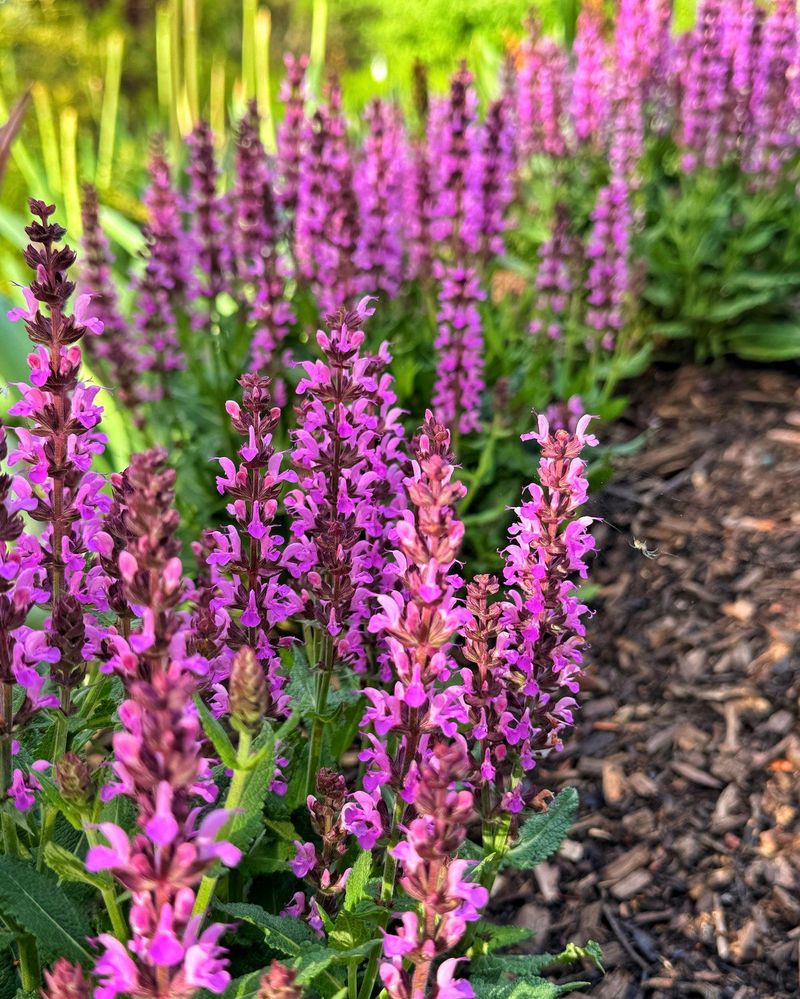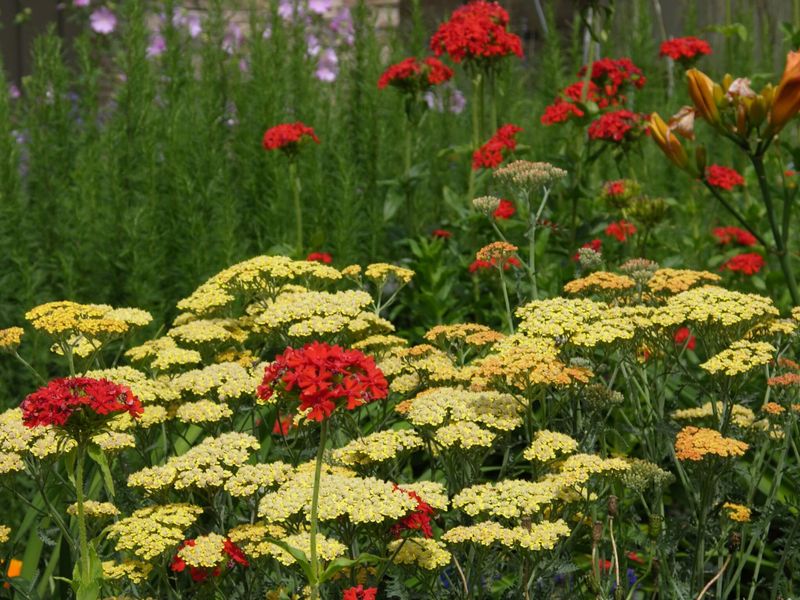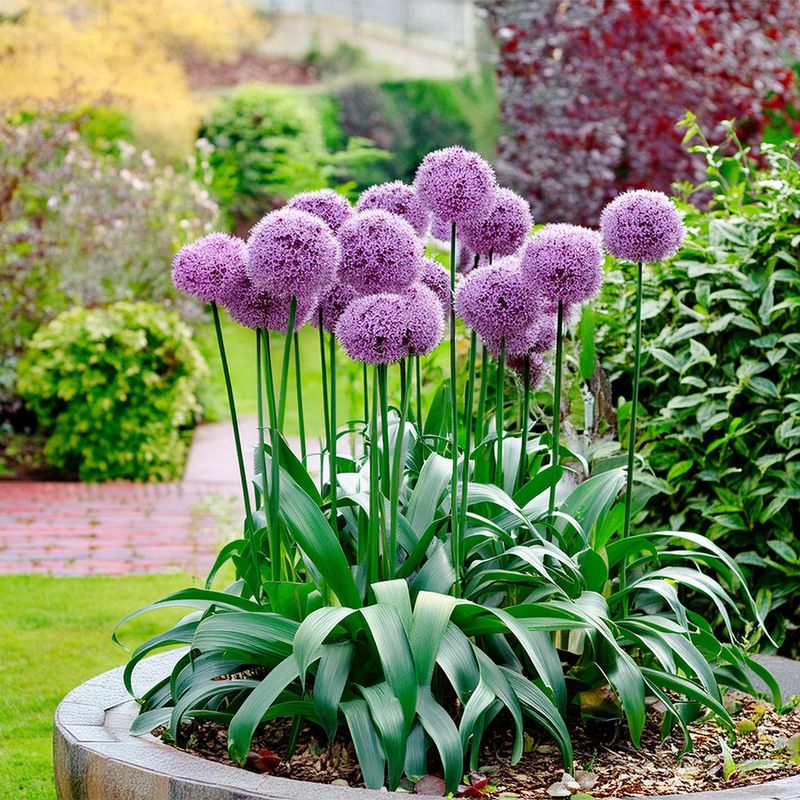Dealing with rabbits munching through your garden beds is the kind of frustration that sneaks up on you—one day everything looks great, and the next, your lettuce is gone. They may look adorable, but wow, they can do some serious damage.
After one too many mornings spent inspecting half-eaten plants, I started looking for natural ways to keep them out—no traps, no sprays, just smart planting. That’s when I discovered that some plants are basically rabbit repellents in disguise.
Whether it’s the scent, taste, or texture, certain flowers and herbs just don’t appeal to them. Planting these around your veggies works like a gentle, green fence—and it actually works.
1. Lavender
The strong aromatic oils in lavender overwhelm a rabbit’s sensitive nose, making them hop in the opposite direction. These oils, which give lavender its signature fragrance, act as a natural deterrent without harming the animals.
Growing lavender along garden borders creates a beautiful purple boundary that serves double duty as rabbit protection. The woody stems and fuzzy leaves provide additional texture rabbits dislike touching or eating.
My neighbor planted lavender strips around her vegetable garden last spring and reported significantly fewer rabbit visits compared to previous years. As a bonus, you’ll enjoy the calming scent and can harvest stems for drying or cooking.
2. Marigolds
Rabbits turn their twitchy noses up at marigolds thanks to the strong smell these bright flowers produce. The pungent scent comes from compounds called terpenes that naturally repel many garden pests, not just rabbits.
These cheerful orange and yellow blooms work perfectly planted around the perimeter of vegetable gardens or interspersed between vulnerable plants. Their shallow root systems make them easy to tuck in anywhere protection is needed.
After struggling with rabbit damage for years, I started planting marigold borders around my lettuce beds. Not only did rabbit nibbling decrease dramatically, but these hardworking flowers also attracted beneficial insects that helped with pollination.
3. Rosemary
This aromatic herb contains potent oils that rabbits find extremely unpleasant. The strong pine-like scent masks the smell of nearby plants that rabbits might otherwise find tempting, creating an invisible barrier of protection.
Rosemary thrives in sunny, well-drained spots and forms attractive shrubs that work well in herb gardens or as landscape accents. Its upright growth habit and woody stems also create physical barriers that rabbits prefer not to navigate through.
When I planted rosemary bushes near my roses, which rabbits previously devoured regularly, the damage stopped almost immediately. The herb’s year-round presence (in warmer climates) provides continuous protection while supplying fresh herbs for cooking.
4. Garlic
Rabbits absolutely detest the strong sulfur compounds in garlic. These compounds, which give garlic its distinctive aroma and flavor, overwhelm a rabbit’s sensitive olfactory system and send them hopping away fast.
Planting garlic cloves around the perimeter of vegetable beds or between vulnerable plants creates an invisible barrier that protects without unsightly fencing. The tall green shoots emerge early in spring, providing protection when young plants are most vulnerable.
Garlic has saved my tulip bulbs from becoming rabbit snacks for three seasons running. Beyond rabbit protection, you’ll harvest useful culinary garlic while the plants continuously release their protective scent into the surrounding area.
5. Onions
The sulfur compounds that give onions their eye-watering quality make rabbits steer clear. These compounds irritate rabbits’ sensitive noses and make nearby plants taste unappetizing, creating a natural protection zone.
Onions work well planted as a border around vegetable gardens or interspersed between more vulnerable plants. Their upright growth habit takes up minimal space while providing maximum protection against nibbling rabbits.
The spring onions I planted between my carrot rows completely stopped the rabbit damage I’d experienced in previous seasons. Most gardeners appreciate how onions pull double-duty – protecting your garden while providing a harvest of their own.
6. Sage
The intense aromatic oils in sage leaves create a powerful scent barrier that rabbits avoid. These oils contain compounds like thujone that rabbits find particularly offensive, keeping them at a distance without harming them.
Sage’s silvery-green foliage adds beautiful texture to garden borders while its purple flowers attract beneficial pollinators. This drought-tolerant perennial thrives in poor soil conditions where other plants might struggle.
A friend surrounded her rabbit-plagued garden with sage plants and reported that rabbit visits dropped by about 80% in the first season. The brushy texture of sage plants also creates a physical barrier that rabbits prefer not to push through.
7. Catmint (Nepeta)
While cats may adore this plant, rabbits strongly dislike the minty fragrance catmint produces. The aromatic oils contain compounds that overwhelm rabbits’ sensitive noses and discourage them from exploring nearby areas.
Catmint’s soft blue-purple flowers bloom for months, creating a beautiful rabbit-repelling border that also attracts beneficial pollinators. Its sprawling growth habit helps cover ground and block rabbit pathways into more vulnerable parts of the garden.
The catmint I planted along my garden fence has been remarkably effective at keeping rabbits from squeezing through the gaps. Even in winter, the dried stems provide some protection, and the plant reliably returns each spring without much maintenance.
8. Wormwood (Artemisia)
Wormwood contains intensely bitter compounds that rabbits detect even before taking a bite. The plant’s silvery foliage releases aromatic oils that create an invisible barrier rabbits won’t cross, protecting nearby plants from damage.
This hardy perennial thrives in poor soil and drought conditions, making it perfect for problem areas where other plants struggle. Its distinctive silver-gray color adds beautiful contrast to garden borders and landscape designs.
After adding wormwood to my perennial borders, rabbit damage to neighboring plants completely stopped. Garden visitors often comment on the striking appearance without realizing it’s actively protecting my more vulnerable plants from becoming rabbit dinner.
9. Geraniums
The distinctive scent of geranium leaves comes from oils that rabbits find particularly offensive. These compounds trigger avoidance behavior in rabbits, causing them to seek easier meals elsewhere in the neighborhood.
Geraniums work beautifully in containers flanking garden entrances or planted directly in the ground as colorful borders. Their variety of flower colors allows them to complement any garden design while providing rabbit protection.
When I surrounded my vegetable garden with geraniums three years ago, rabbit damage decreased noticeably within weeks. The plants bloom continuously from spring through fall with minimal care, providing months of rabbit deterrence alongside their cheerful flowers.
10. Foxglove
All parts of foxglove contain compounds that taste intensely bitter and are actually toxic to rabbits. Rabbits’ natural instinct to avoid poisonous plants keeps them away from foxglove and often the surrounding area as well.
The tall spires of tubular flowers add vertical interest to garden borders while serving as a beautiful rabbit deterrent. Foxglove thrives in partially shaded areas where many other rabbit-repelling plants might struggle.
Since adding foxglove to the woodland edge of my property, rabbit activity has significantly decreased in that area. Remember that foxglove is toxic to humans and pets too, so place it thoughtfully where curious children and animals won’t be tempted to taste it.
11. Russian Sage
The pungent aroma from Russian sage’s silvery leaves creates an effective rabbit barrier around your garden. The plant contains terpenes and other aromatic compounds that rabbits find overwhelming to their sensitive noses.
This drought-tolerant perennial produces beautiful lavender-blue flower spikes that attract butterflies and bees while deterring rabbits. Its tall, airy structure allows it to blend into perennial borders or stand alone as a statement plant.
The Russian sage I planted along my driveway not only stopped rabbits from entering my front garden but has become a conversation piece with neighbors. Even in winter, the woody stems provide some deterrent effect, with fresh growth emerging reliably each spring.
12. Mint
The intense menthol compounds in mint leaves create a scent barrier that rabbits prefer to avoid. These aromatic oils overwhelm rabbits’ sensitive noses and mask the smell of nearby plants they might otherwise find tempting.
Mint spreads vigorously, making it perfect for areas where you need extensive rabbit protection. Consider planting it in containers sunk into the ground to prevent it from taking over completely.
My vegetable garden remained rabbit-free after I planted mint along the fence line. The bonus is having fresh mint readily available for summer drinks and cooking. Just be warned that mint can become invasive if not contained properly.
13. Daffodils
Daffodils contain lycorine and other alkaloids that make them toxic and extremely unpalatable to rabbits. These compounds trigger an immediate aversion response, causing rabbits to avoid not just the daffodils but often the surrounding area as well.
Planting daffodil bulbs around the perimeter of gardens provides early spring protection when rabbit populations are actively breeding and hungry. Their cheerful yellow blooms brighten the landscape while serving as a first line of defense.
The daffodil border around my tulip bed has completely eliminated the rabbit damage I used to experience each spring. Since rabbits remember negative experiences with food, they tend to avoid areas where they’ve encountered daffodils even after the flowers have faded.
14. Snapdragons
Snapdragons contain compounds that create a bitter taste rabbits instinctively avoid. Their unique flower structure and slightly fuzzy stems provide additional textural deterrents that rabbits don’t enjoy brushing against.
These colorful flowers work beautifully in borders or containers placed strategically around vulnerable plants. Their variety of heights and colors allows them to fit into almost any garden design while providing rabbit protection.
Last summer, I surrounded my lettuce patch with snapdragons and noticed a significant decrease in rabbit damage compared to previous seasons. Beyond their protective qualities, snapdragons attract beneficial pollinators and make excellent cut flowers for indoor arrangements.
15. Dusty Miller
The silvery, felt-like foliage of Dusty Miller contains compounds and textures that rabbits find unappealing. The fuzzy leaf surface feels unpleasant in their mouths, while the plant’s natural chemicals create a bitter taste that deters further nibbling.
Dusty Miller’s striking silver color adds beautiful contrast to garden borders while serving as an effective rabbit deterrent. This drought-tolerant plant thrives in full sun and poor soil conditions where other plants might struggle.
After incorporating Dusty Miller into my front yard landscaping, rabbit damage to neighboring plants decreased noticeably. The plant maintains its silver foliage year-round in milder climates, providing continuous rabbit protection even during winter months.
16. Salvia
Salvia produces aromatic oils that rabbits find extremely offensive to their sensitive noses. These compounds create an invisible barrier that protects nearby plants without the need for unsightly fencing or chemical repellents.
The spiky blue or purple flower stalks add vertical interest to garden borders while deterring rabbit visits. Salvia attracts beneficial pollinators like bees and butterflies, making it a multifunctional addition to any landscape.
The salvias I planted throughout my perennial beds have dramatically reduced rabbit damage to neighboring plants. Different varieties bloom from spring through fall, providing extended rabbit protection alongside their beautiful flowers and minimal water requirements.
17. Yarrow
Yarrow contains volatile oils that create a strong scent rabbits prefer to avoid. These aromatic compounds mask the smell of nearby plants that rabbits might otherwise find appetizing, creating a protective zone around your garden.
This hardy perennial produces flat-topped flower clusters in shades of yellow, pink, or white that attract beneficial insects. Yarrow thrives in poor soil and drought conditions, making it perfect for problem areas in the landscape.
Since adding yarrow to my meadow garden, I’ve noticed significantly fewer rabbit trails and damage to neighboring plants. The fern-like foliage provides texture and interest even when the plant isn’t flowering, while the dried seed heads add winter interest.
18. Allium
Ornamental alliums contain the same sulfur compounds found in their edible relatives like garlic and onions. These compounds create a strong scent that rabbits detect and avoid, making alliums excellent border plants for rabbit-prone areas.
The globe-shaped purple flower heads create dramatic visual impact while actively deterring rabbits from your garden. Alliums bloom in late spring when rabbit populations are actively growing and hungry for garden treats.
Planting allium bulbs around my tulips completely eliminated the rabbit damage I used to experience each spring. The dried seed heads continue to provide visual interest long after the flowers have faded, and the bulbs multiply over time for increased protection.

